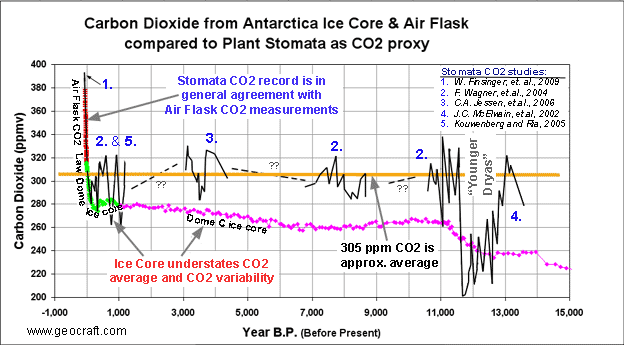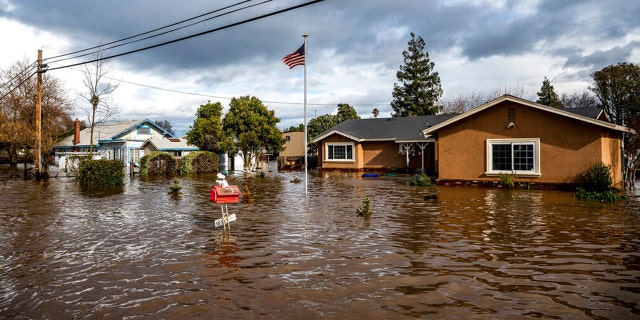You are using an out of date browser. It may not display this or other websites correctly.
You should upgrade or use an alternative browser.
You should upgrade or use an alternative browser.
Oceans were the hottest ever recorded in 2022: public discussion
- Thread starter Into the Night
- Start date
Into the Night
Verified User
You're no longer in a position to be taken seriously, dumbass. Not that you ever were.
Haw, haw...............................haw.
You don't get to decide, dumbass.
Into the Night
Verified User
Sigh.
Yet another thread demonstrating that the anti-science, uneducated, clinically stupid people of the Earth should be sterilized.
https://en.wikipedia.org/wiki/Scien...tific,observations based on those predictions.
Science does not predict. It is not a crystal ball, fortune telling scheme, palm reading, or entrail reading.
Science is not a method nor a procedure.
Wikipedia is wrong, yet again.
Into the Night
Verified User
I feel like there's something else going on there. Yes, Into the Night is most assuredly a complete fucking moron, but I also feel like his attempt to spread disinformation is more malicious. I also have good reason to believe that he's autistic and actually has very little self control related to his psychopathic online persona.
Psychoquackery.
Into the Night
Verified User
Sweden is not in the Arctic. Just a small piece of it.Sweden is in the Arctic, not all of it, but a very substantial part of it. Into the Night Soil also has his head up his ass.
You do not travel EAST to get to the Arctic.
Into the Night
Verified User
Waddya know ? No response from the ' Sweden is not east of the UK ' moron nor the ' The Arctic Circle and the Arctic are not the same thing ' snake.
Leave it at that , eh. Two bums booted.
You don't get to decide.
moon
Satire for Sanity
You don't get to decide, dumbass.
You don't get to decide.
Ah, but I do, moron. My opinions are all based upon fact- unless otherwise stated.
Sweden is not in the Arctic. Just a small piece of it.
A substantial area of Sweden is in the Arctic. ' Sweden is in the Arctic ' is a correct statement. ' Your head is up your ass ' is a correct statement when you have a substantial portion of your head up your ass - as you do. 'Sweden is not in the Arctic ' is hilariously incorrect. You are a clown
You do not travel EAST to get to the Arctic.
You travel east from the UK to get to Sweden- contrary to your dumbass claim, dumbass.
Haw, haw................................haw.
Cop this;
I'm saving your idiotic post, incidentally. I'll remind the forum of it every time you troll me.
Into the Night Soil
Sweden is not in the Arctic
Moon NOW thinks that Sweden is in the Arctic!
https://www.justplainpolitics.com/s...ever-recorded-in-2022-public-discussion/page3 #35
Haw, haw...........................haw.
serendipity
Verified User
That mullah jizz is powerful juju, McMoonshi'ite downs it in industrial quantities. Let's step back from fantasy land into reality. The Holecene has had periods way warmer than present anybody who tells you different is not to be trusted.
The Holocene Thermal Maximum around Svalbard, Arctic North Atlantic; molluscs show early and exceptional warmth
Abstract
Shallow marine molluscs that are today extinct close to Svalbard, because of the cold climate, are found in deposits there dating to the early Holocene. The most warmth-demanding species found, Zirfaea crispata, currently has a northern limit 1000 km farther south, indicating that August temperatures on Svalbard were 6°C warmer at around 10.2–9.2 cal. ka BP, when this species lived there. The blue mussel, Mytilus edulis, returned to Svalbard in 2004 following recent warming, and after almost 4000 years of absence, excluding a short re-appearance during the Medieval Warm Period 900 years ago. Mytilus first arrived in Svalbard at 11 cal. ka BP, indicating that the climate was then as least as warm as present. This first warm period lasted from 11 to 9 cal. ka BP and was followed by a period of lower temperatures 9–8.2 cal. ka BP. After 8.2 cal. ka, the climate around Svalbard warmed again, and although it did not reach the same peak in temperatures as prior to 9 ka, it was nevertheless some 4°C warmer than present between 8.2 and 6 cal. ka BP. Thereafter, a gradual cooling brought temperatures to the present level at about 4.5 cal. ka BP. The warm early-Holocene climate around Svalbard was driven primarily by higher insolation and greater influx of warm Atlantic Water, but feedback processes further influenced the regional climate.
https://journals.sagepub.com/doi/abs/10.1177/0959683617715701
The Holocene Thermal Maximum around Svalbard, Arctic North Atlantic; molluscs show early and exceptional warmth
Abstract
Shallow marine molluscs that are today extinct close to Svalbard, because of the cold climate, are found in deposits there dating to the early Holocene. The most warmth-demanding species found, Zirfaea crispata, currently has a northern limit 1000 km farther south, indicating that August temperatures on Svalbard were 6°C warmer at around 10.2–9.2 cal. ka BP, when this species lived there. The blue mussel, Mytilus edulis, returned to Svalbard in 2004 following recent warming, and after almost 4000 years of absence, excluding a short re-appearance during the Medieval Warm Period 900 years ago. Mytilus first arrived in Svalbard at 11 cal. ka BP, indicating that the climate was then as least as warm as present. This first warm period lasted from 11 to 9 cal. ka BP and was followed by a period of lower temperatures 9–8.2 cal. ka BP. After 8.2 cal. ka, the climate around Svalbard warmed again, and although it did not reach the same peak in temperatures as prior to 9 ka, it was nevertheless some 4°C warmer than present between 8.2 and 6 cal. ka BP. Thereafter, a gradual cooling brought temperatures to the present level at about 4.5 cal. ka BP. The warm early-Holocene climate around Svalbard was driven primarily by higher insolation and greater influx of warm Atlantic Water, but feedback processes further influenced the regional climate.
https://journals.sagepub.com/doi/abs/10.1177/0959683617715701
Last edited:
Bigdog
Harris - make America a 3rd world shithole
^
^
^
^
^
The Brit maggot in ' I've been fucked, quick, I'll cut-and-paste somebody else's stuff' mode.
Haw, haw.............................haw.
What are y'all bitchin' about ...

A major factor for the UK is that the land is still adjusting very slowly to the retreat of the ice sheets at the end of the last Ice Age, which ended around 12,000 years ago: parts of Southwest England are sinking at a rate of about 0.6 millimetres per year, while parts of Scotland are rising by 1 millimetre per year. "
https://www.lse.ac.uk/granthaminsti...major factor for the,by 1 millimetre per year
"
Last edited:
Bigdog
Harris - make America a 3rd world shithole
The most warmth-demanding species found, Zirfaea crispata, currently has a northern limit 1000 km farther south, indicating that August temperatures on Svalbard were 6°C warmer at around 10.2–9.2 cal. ka BP, when this species lived there.e.
https://journals.sagepub.com/doi/abs/10.1177/0959683617715701
Nice find. Modern proxy data is buried or dismissed for just this reason.
Just like they've thrown out modern Tree Ring proxy data because when compared to instrument data, it indicates it was much warmer in the past than we are being told.
moon
Satire for Sanity
Bigdog
That ain't fast enough
Haw, haw...........................................haw.
What are y'all bitchin' about ... ?
...'parts of Southwest England are sinking at a rate of about 0.6 millimetres per year,'
That ain't fast enough
Haw, haw...........................................haw.
serendipity
Verified User
Nice find. Modern proxy data is buried or dismissed for just this reason.
Just like they've thrown out modern Tree Ring proxy data because when compared to instrument data, it indicates it was much warmer in the past than we are being told.
Yes it puts paid to the bullshit that you hear constantly that this era is the warmest in human history.
Bigdog
Harris - make America a 3rd world shithole
Bigdog
That ain't fast enough
Haw, haw...........................................haw.
Ok, now that you got that off your chest, we can go back to discussing weather history.
"Contrary to the prevailing notion of CO2 stability, CO2 swings of 20-50 ppm or more over timespans of 500-1000 years appear to be the norm-- not the exception.

Figure 5. Illustrated here are results from recent stomata studies which show that CO2 was more variable and the average CO2 concentrations have been significantly higher during our Holocene interglacial period (last 11,000 years) than are indicated by the ice core record. A precipitous drop in CO2 during the "Younger Dryas" was captured nicely by the stomata record, but missed by the CO2 record in ice cores. "
https://geocraft.com/WVFossils/stomata.html
For those who missed plant biology, Stomata are the "breathing" holes in leaves (which includes pine needles).
And "Air Flask" sampling started in 1957.

